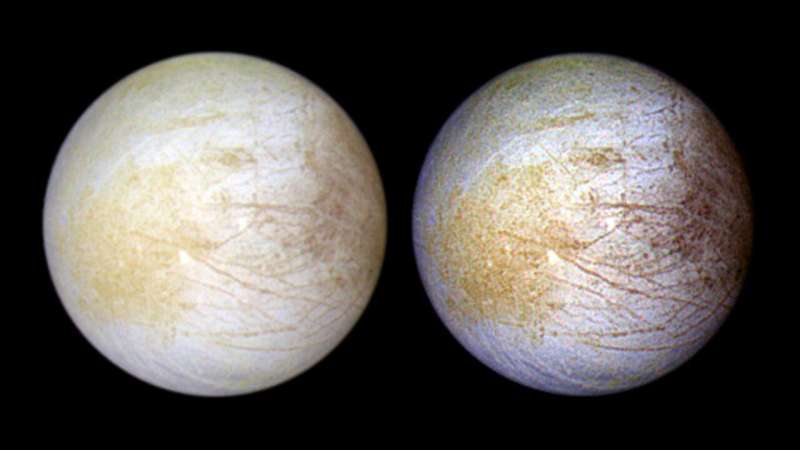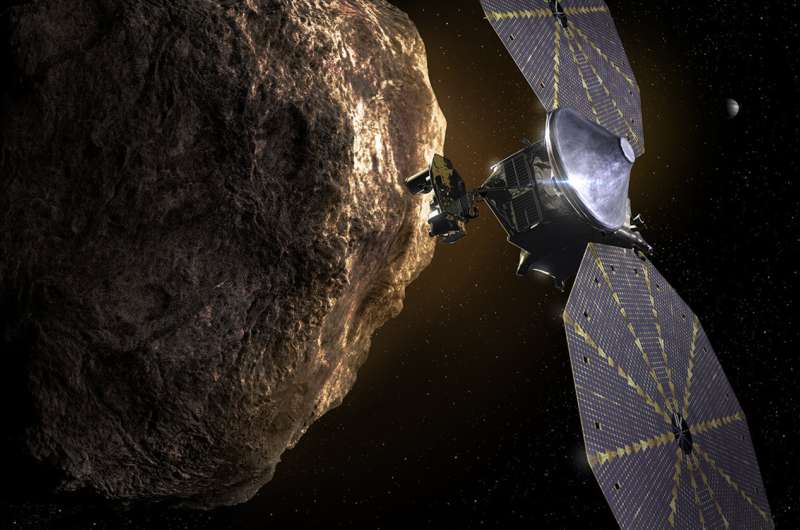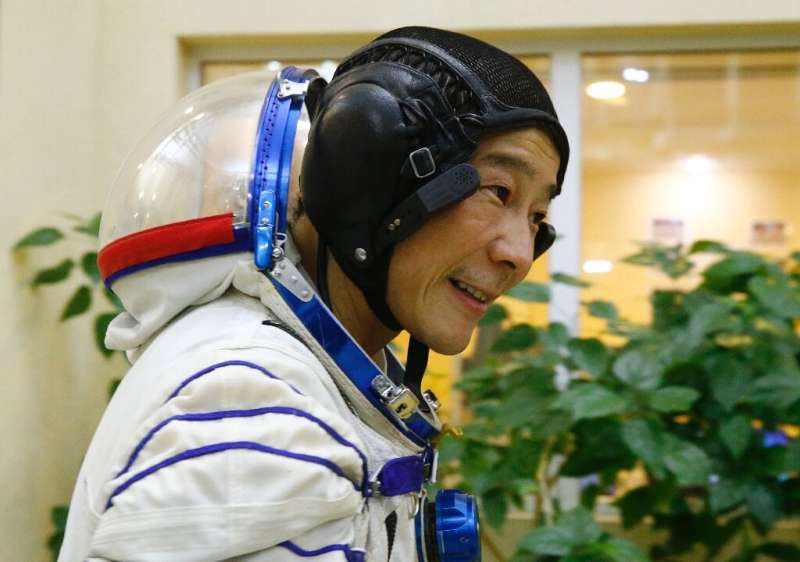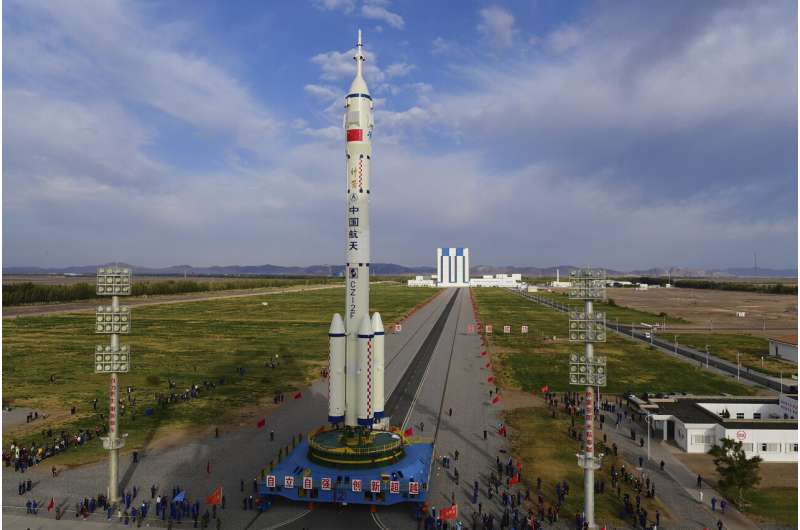
Copernical Team
NASA, ULA pursue precision launch for Lucy asteroid mission
 NASA has worked years to build a spacecraft to examine eight asteroids for clues about the origins of the solar system, and now the agency has a three-week period to launch starting this weekend.
The launch period will begin the earliest possible attempt at 5:34 a.m. EDT Saturday from Cape Canaveral Space Force Station in Florida.
The launch is to send the $981 million mission on
NASA has worked years to build a spacecraft to examine eight asteroids for clues about the origins of the solar system, and now the agency has a three-week period to launch starting this weekend.
The launch period will begin the earliest possible attempt at 5:34 a.m. EDT Saturday from Cape Canaveral Space Force Station in Florida.
The launch is to send the $981 million mission on China to launch latest crewed space mission Saturday morning
 China will send three astronauts to its new space station this week, officials confirmed Thursday, in what will be Beijing's longest crewed mission to date.
The three will blast off at 12:23 a.m. on Saturday from the launch centre in northwestern China's Gobi desert, the China Manned Space Agency (CMSA) said at a press conference Thursday.
They will spend six months at the Tiangong space
China will send three astronauts to its new space station this week, officials confirmed Thursday, in what will be Beijing's longest crewed mission to date.
The three will blast off at 12:23 a.m. on Saturday from the launch centre in northwestern China's Gobi desert, the China Manned Space Agency (CMSA) said at a press conference Thursday.
They will spend six months at the Tiangong space Hubble finds evidence of persistent water vapor in one hemisphere of Europa

Lucy in the sky: Spacecraft will visit record 8 asteroids

Attention asteroid aficionados: NASA is set to launch a series of spacecraft to visit and even bash some of the solar system's most enticing space rocks.
The robotic trailblazer named Lucy is up first, blasting off this weekend on a 12-year cruise to swarms of asteroids out near Jupiter—unexplored time capsules from the dawn of the solar system. And yes, there will be diamonds in the sky with Lucy, on one of its science instruments, as well as lyrics from other Beatles' songs.
Japanese billionaire Maezawa 'not afraid' ahead of ISS launch

Japanese billionaire Yusaku Maezawa said Thursday he had no fear ahead of his "dream-come-true" launch to the International Space Station (ISS), a Russian project aimed at boosting its space tourism credentials.
The mission is one of several this year by non-professional astronauts, including 90-year-old "Star Trek" actor William Shatner who on Wednesday completed a space flight on board a Blue Origin rocket.
Maezawa, 45, is the founder of Japan's largest online fashion mall and the country's 30th richest man, according to Forbes.
"I've got a list of one hundred things I want to do on the station like play badminton," Maezawa said at a news conference on Thursday.
"The closer it gets the more excited I get. I'm not afraid or worried," he said.
Maezawa and his assistant are set to blast off from the Russia-leased Baikonur cosmodrome in Kazakhstan in December, accompanied by Russia cosmonaut Alexander Misurkin.
Russian Soyuz rocket launches 36 new UK satellites
A Russian Soyuz rocket on Thursday blasted into space carrying 36 new satellites from British operator OneWeb, which aims to provide broadband internet everywhere in the world.
The rocket, operated by Europe's Arianespace, took off at 0940 GMT from the Vostochny cosmodrome in Russia's Far East, broadcast live by the country's Roscosmos space agency.
"LIFTOFF!" Roscosmos tweeted after the launch—the seventh this year carrying OneWeb satellites.
OneWeb, a London-headquartered company, is working to complete the construction of a constellation of low earth orbit satellites providing enhanced broadband and other services to countries around the world.
The company is competing in the race to provide fast internet for the world's remote areas via satellites along with tech billionaire Elon Musk and fellow billionaire Jeff Bezos of Amazon.
The UK company plans for its global commercial internet service to be operational by next year, supported by some 650 satellites.
Arianespace, which has worked with Russia for close to two decades, is under contract to make 16 Soyuz launches between December 2020 and the end of 2022.
With this latest mission, a total of 358 satellites are now in orbit for the constellation, Roscosmos said.
Explore further
Prince William tells space tourists: fix Earth instead

Britain's Prince William has launched an attack on space tourism, urging more attention on problems closer to home ahead of the COP26 climate summit.
The comments by Queen Elizabeth II's grandson were airing in a BBC interview later Thursday, a day after "Star Trek" star William Shatner became a real space traveller on Blue Origin's second crewed mission.
The mission replayed the company's maiden human flight in July, which included its founder Jeff Bezos of Amazon and was seen as a breakthrough for the emerging space tourism sector.
But Prince William said: "We need some of the world's greatest brains and minds fixed on trying to repair this planet, not trying to find the next place to go and live."
Virgin Galactic, which offers a similar experience of a few minutes' weightlessness and a view of the Earth's curvature from the cosmos, launched its founder Richard Branson in July, a few days before Bezos.
China set to send 3 astronauts on longest crewed mission yet

Funding the future of European space through OSIP in 2021

What do high-tech sponges, aircraft shaped like falcons and 3D printers on the Moon have in common?
They can all be found among the topics of the 87 research and development activities funded by ESA's Discovery & Preparation programme between November 2020 and April 2021.
Working towards a Digital Twin of Earth

How can a digital replica of Earth help us understand our planet’s past, present and future? As part of the fourth edition of Φ-week taking place this week, a group of European scientists have put forward their ideas on the practical implementation of Digital Twins and the potential application areas for a Digital Twin Earth in the real world.
